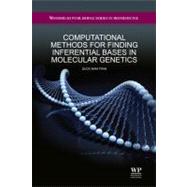Computational Methods for Finding Inferential Bases in Molecular Genetics
, by Tran, Quoc-Nam- ISBN: 9781907568398 | 1907568395
- Cover: Hardcover
- Copyright: 3/31/2012
This book covers computational methods for selecting relevant biomolecules such as genes and protein kinases with an emphasis on a new method. Microarrays are a technology with great potential to provide accurate medical diagnostics. In recent years, microarrays have opened the possibility of creating data sets of molecular information to represent many systems of biological or clinical interest. Gene expression profiles have been used as inputs to large-scale data analysis, for example, to serve as fingerprints to build more accurate molecular classification, to discover hidden taxonomies or to increase our understanding of normal and disease states. Gene selection is a challenging task in microarray data mining because a typical microarray dataset has only a small number of records while having thousands of attributes. This kind of dataset creates a high likelihood of finding false predictions that are due to chance. Finding the most relevant genes is often the key phase in building an accurate classification model. Irrelevant and redundant attributes have negative impacts on the accuracy of classification algorithms. In this book, the author looks at computational methods for selecting relevant genes with an emphasis on a new. The new method is based upon the Gini ratios and Lorenz curves. Experimental results with many different classification algorithms for the task of classifying lung adenocarcinomas from gene expression show that: (a) this method is different with SAM, one of the most popular gene selection methods, in the sense that it finds very different sets of significant genes; (b) this method finds better genes for more accurate classification.






